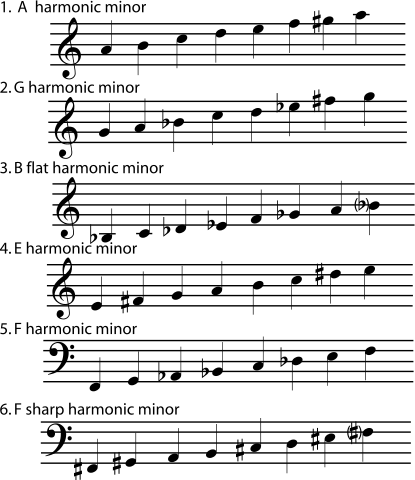
Its key signature consists of two sharps. Melodies in minor keys often use this particular pattern of accidentals, so instrumentalists find it useful to practice melodic minor scales. B minor is a minor scale based on B, consisting of the pitches B, C, D, E, F, G, and A. In Classical music, you play the true melodic minor scale ascending and the natural. (Please see Beginning Harmonic Analysis for more about this.) In the melodic minor scale, the sixth and seventh notes of the scale are each raised by one half step when going up the scale, but return to the natural minor when going down the scale. The first mode of the melodic minor scale isthe melodic minor scale. Harmonies in minor keys often use this raised seventh tone in order to make the music feel more strongly centered on the tonic. The harmonic minor scale raises the seventh note of the scale by one half step, whether you are going up or down the scale. Melodic Minor - A Minor scale that differ from the natural Minor by containing one instead of three flattened notes. Sometimes written as Natural Minor to distinguish it from other Minor scale categories. B Minor is sometimes written as Bm in shortened form. There are two other kinds of minor scales that are commonly used, both of which include notes that are not in the key signature. The B Minor scale are connected to the key of B Minor, they contain same notes. They contain only the notes in the minor key signature. To hear some simple examples in both major and minor keys, see Major Keys and Scales.ĭo key signatures make music more complicated than it needs to be? Is there an easier way? Join the discussion at Opening Measures.Īll of the scales above are natural minor scales. Music that is in a minor key is sometimes described as sounding more solemn, sad, mysterious, or ominous than music that is in a major key. So you can't, for example, transpose a piece from C major to D minor (or even to C minor) without changing it a great deal. the natural minor scale is like a major scale with lowered 3, 6, and 7. Music in minor keys has a different sound and emotional feel, and develops differently harmonically. B major and Cb major, for example, are enharmonic keys. A couple of jazz standard examples off the top of my head: 'Autumn Leaves' features ascending melodic minor in its 4th line ('of red and gold') over the major V chord - which is technically a harmonic minor chord, but only because it. But music that is in D minor will have a different quality, because the notes in the minor scale follow a different pattern and so have different relationships with each other. Likewise, theres no need to use the harmonic minor scale, even on a harmonic minor chord (such as V or vii) - aside from the chord tones involved, of course.



(See Beginning Harmonic Analysis for more on this.) So music that is in, for example, C major, will not sound significantly different from music that is in, say, D major. In each major scale, however, the notes are arranged in the same major scale pattern and build the same types of chords that have the same relationships with each other. Each major key uses a different set of notes (its major scale).


 0 kommentar(er)
0 kommentar(er)
